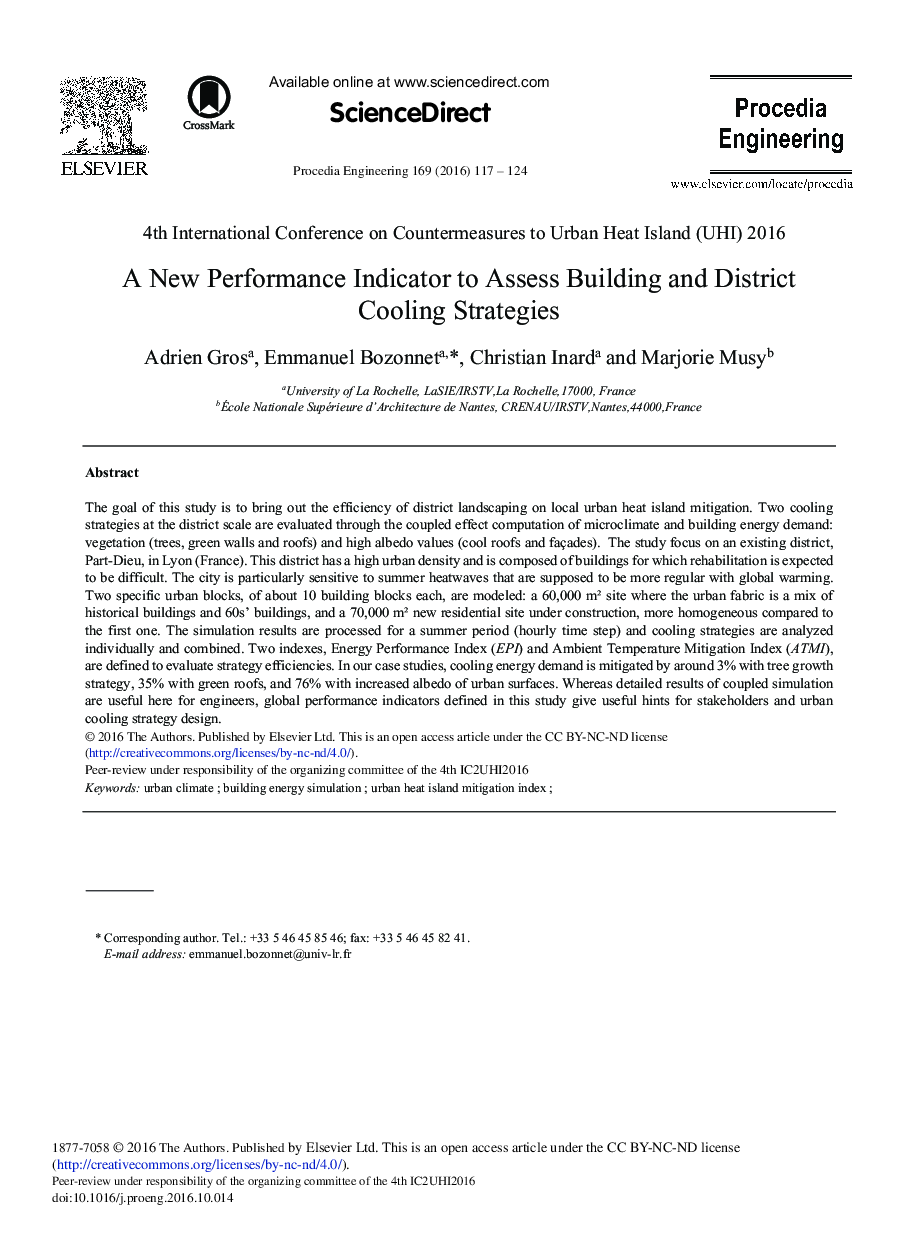| کد مقاله | کد نشریه | سال انتشار | مقاله انگلیسی | نسخه تمام متن |
|---|---|---|---|---|
| 5029210 | 1470657 | 2016 | 8 صفحه PDF | دانلود رایگان |
عنوان انگلیسی مقاله ISI
A New Performance Indicator to Assess Building and District Cooling Strategies
ترجمه فارسی عنوان
شاخص عملکرد جدید برای ارزیابی استراتژی های خنک کننده ساختمان و منطقه
دانلود مقاله + سفارش ترجمه
دانلود مقاله ISI انگلیسی
رایگان برای ایرانیان
کلمات کلیدی
آب و هوای شهری، شبیه سازی انرژی ساختمان، شاخص کاهش آسیب شهرک شهری،
موضوعات مرتبط
مهندسی و علوم پایه
سایر رشته های مهندسی
مهندسی (عمومی)
چکیده انگلیسی
The goal of this study is to bring out the efficiency of district landscaping on local urban heat island mitigation. Two cooling strategies at the district scale are evaluated through the coupled effect computation of microclimate and building energy demand: vegetation (trees, green walls and roofs) and high albedo values (cool roofs and façades). The study focus on an existing district, Part-Dieu, in Lyon (France). This district has a high urban density and is composed of buildings for which rehabilitation is expected to be difficult. The city is particularly sensitive to summer heatwaves that are supposed to be more regular with global warming. Two specific urban blocks, of about 10 building blocks each, are modeled: a 60,000 m2 site where the urban fabric is a mix of historical buildings and 60s' buildings, and a 70,000 m2 new residential site under construction, more homogeneous compared to the first one. The simulation results are processed for a summer period (hourly time step) andcooling strategies are analyzed individually and combined. Two indexes, Energy Performance Index (EPI) and Ambient Temperature Mitigation Index (ATMI), are defined to evaluate strategy efficiencies. In our case studies, cooling energy demand is mitigated by around 3% with tree growth strategy, 35% with green roofs, and 76% with increased albedo of urban surfaces. Whereas detailed results of coupled simulation are useful here for engineers, global performance indicators defined in this study give useful hints for stakeholders and urban cooling strategy design.
ناشر
Database: Elsevier - ScienceDirect (ساینس دایرکت)
Journal: Procedia Engineering - Volume 169, 2016, Pages 117-124
Journal: Procedia Engineering - Volume 169, 2016, Pages 117-124
نویسندگان
Adrien Gros, Emmanuel Bozonnet, Christian Inard, Marjorie Musy,
